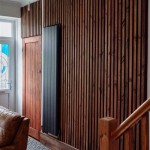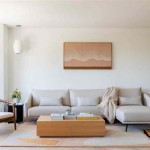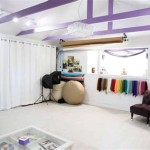What Is My Interior Design Style Called?
Determining an individual's interior design style involves a comprehensive assessment of their preferences, lifestyle, and functional needs within a living space. It is a process of translating abstract aesthetic inclinations into concrete design elements. This process is often necessary when undertaking home renovations, redecorating, or even simply seeking to create a more harmonious and personalized environment. Identifying a particular style can serve as a blueprint for making informed decisions about furniture, color palettes, textures, and accessories.
Understanding one's interior design leanings isn't always immediate. Many individuals find themselves drawn to elements from various styles, creating a hybrid aesthetic. This blending of different styles is not only acceptable, but it is also often what makes a space truly unique and reflective of its inhabitants. However, recognizing the core components of dominant styles can provide valuable guidance and prevent a space from feeling disjointed or lacking cohesion.
The search for understanding a personal interior design style might stem from a variety of motivations. Perhaps it is the desire to emulate a particular aesthetic seen in magazines or online. Or perhaps the motivation comes from a need to update a space that feels dated or unwelcoming. Regardless of the reason, embarking on this self-discovery journey can lead to a more fulfilling and comfortable living environment.
Identifying Core Aesthetic Preferences
The initial step in determining one’s interior design style entails a thorough examination of personal aesthetic preferences. This extends beyond simply stating a fondness for "modern" or "traditional." A more in-depth exploration necessitates asking specific questions about preferred shapes, colors, materials, and overall atmosphere. Do clean lines and minimalist forms appeal more than ornate details and intricate patterns? Is there a preference for warm, earthy tones or cooler, more vibrant hues? Do natural materials like wood and stone resonate more than synthetic materials like metal and glass?
Gathering visual inspiration is a highly effective method for identifying recurring themes and patterns in personal preferences. Online platforms such as Pinterest and Houzz offer vast collections of interior design images. Create boards or folders to curate images of spaces that evoke a positive emotional response. By analyzing these curated collections, it becomes easier to identify common threads in terms of color schemes, furniture styles, and overall design concepts.
Consider the artwork, clothing, and other personal belongings that are already owned and enjoyed. These items often reflect underlying aesthetic preferences. For example, someone who favors abstract paintings and minimalist clothing may be naturally drawn to a modern or contemporary interior design style. Conversely, someone who collects antique furniture and enjoys floral patterns may gravitate towards a more traditional or romantic aesthetic.
Pay attention to any instinctive reactions to different design elements. A strong aversion to a particular color, texture, or style can be just as informative as a strong attraction to another. Keeping a journal or notebook to record these observations can prove invaluable throughout the process. It is also important to distinguish between fleeting trends and enduring personal preferences. A style that feels appealing in the moment may not necessarily reflect long-term tastes.
Understanding Common Interior Design Styles
Familiarizing oneself with the characteristics of prominent interior design styles is crucial for accurately categorizing personal preferences. Each style possesses distinct features regarding color palettes, furniture selection, material usage, and overall spatial arrangement. Gaining a fundamental understanding of these styles provides a framework for identifying the closest matches to individual tastes.
Modern: Characterized by clean lines, minimalist forms, and a focus on functionality. Color palettes often consist of neutral tones with occasional pops of bold color. Furniture typically features sleek, unadorned silhouettes and is constructed from materials like steel, glass, and concrete.
Contemporary: Similar to modern, but with a slightly more relaxed and evolving aesthetic. Embraces current trends and incorporates elements of other styles. Color palettes can be more varied and may include warmer tones. Furniture often features curved lines and incorporates natural materials.
Traditional: Emphasizes classic elegance, symmetry, and formality. Color palettes tend to be rich and warm, often incorporating jewel tones and intricate patterns. Furniture is typically ornate and features detailed carvings and upholstered elements. Materials like wood, leather, and silk are commonly used.
Rustic: Celebrates natural materials and a sense of warmth and informality. Color palettes are typically earthy and muted, reflecting the hues of wood, stone, and other natural elements. Furniture is often handcrafted and features rough textures and imperfections.
Bohemian: A free-spirited and eclectic style that embraces individuality and creativity. Color palettes are often vibrant and incorporate a mix of patterns and textures. Furniture is typically a mix of vintage and global finds, with a focus on comfort and relaxation.
Minimalist: A pared-down style that emphasizes simplicity and functionality. Color palettes are typically neutral and monochromatic. Furniture is minimal and unadorned, with a focus on clean lines and essential forms.
By studying these and other prominent interior design styles, it becomes easier to identify the specific elements that resonate most strongly. It is important to remember that many individuals find themselves drawn to a combination of styles, rather than adhering strictly to a single aesthetic.
Analyzing Lifestyle and Functional Needs
Beyond purely aesthetic considerations, one’s lifestyle and functional needs play a significant role in determining the most suitable interior design style. The design of a living space should not only be visually appealing but also practical and conducive to everyday activities. Consider factors such as the size of the household, the frequency of entertaining, and any specific hobbies or interests that require dedicated space.
For example, a family with young children may prioritize durability and easy maintenance when selecting furniture and materials. A minimalist aesthetic may be visually appealing, but it may not be the most practical choice for a household that generates a lot of clutter. In such cases, a more relaxed and forgiving style, such as farmhouse or transitional, may be a better fit.
Similarly, someone who works from home may require a dedicated office space that is both functional and aesthetically pleasing. A modern or contemporary style may be well-suited for creating a productive and inspiring work environment. However, it is important to consider the level of comfort and personalization that is desired in the workspace.
Individuals who frequently entertain guests may prioritize creating a welcoming and social atmosphere. A traditional or eclectic style may be ideal for fostering a sense of warmth and hospitality. However, it is essential to consider the flow of traffic and the functionality of the entertaining spaces.
Consider any specific needs or challenges that must be addressed through the design. For example, someone with mobility issues may require a space that is easily navigable and features accessible furniture and fixtures. In such cases, functionality should be prioritized over purely aesthetic considerations.
By carefully analyzing lifestyle and functional needs, it becomes possible to refine the search for a personal interior design style and ensure that the living space is not only beautiful but also practical and comfortable.
After evaluating personal aesthetic preferences, understanding the nuances of various interior design styles, and considering lifestyle and functional needs, individuals can begin to synthesize this information to pinpoint their dominant style. This might involve recognizing a singular style that aligns perfectly or, more commonly, identifying a combination of styles that resonate most strongly. The ultimate goal is to create a space that feels authentic, comfortable, and reflective of one's individual personality. This holistic approach ensures that the designed space is not merely aesthetically pleasing but also functional and supportive of the daily lives of its inhabitants.

Interior Design Styles 101 The Ultimate Guide To Decorating In 2024 Decorilla

How To Figure Out What S My Design Style Worthing Court

Interior Design Styles 101 The Ultimate Guide To Decorating In 2024 Decorilla

21 Most Popular Types Of Interior Design Styles In 2024 Foyr

Interior Design Styles 101 The Ultimate Guide To Decorating In 2024 Decorilla

21 Most Popular Types Of Interior Design Styles In 2024 Foyr

Contemporary Design Style And The Essentials To Master It Décor Aid

21 Most Popular Types Of Interior Design Styles In 2024 Foyr

25 Interior Design Styles You Should Know 2024

What Is My Interior Design Style Look Inside Contemporary Artist Kate Tova S Studio
Related Posts








